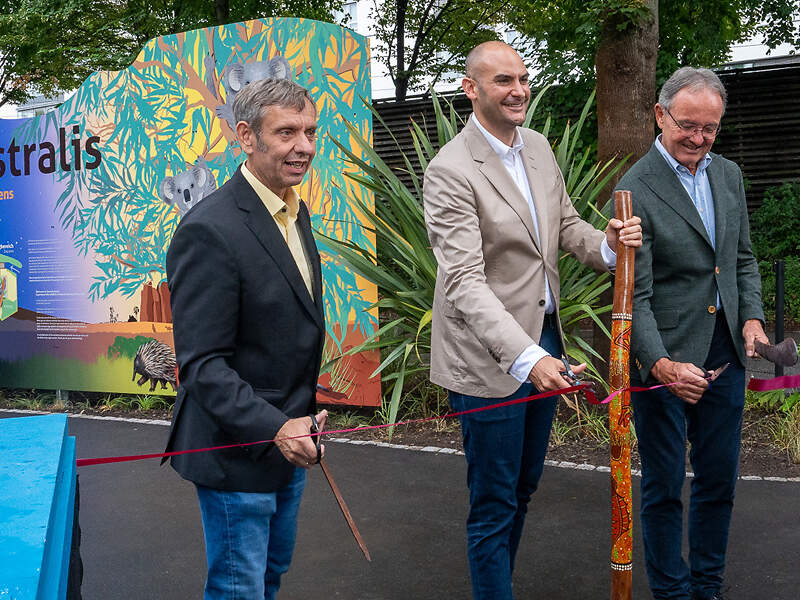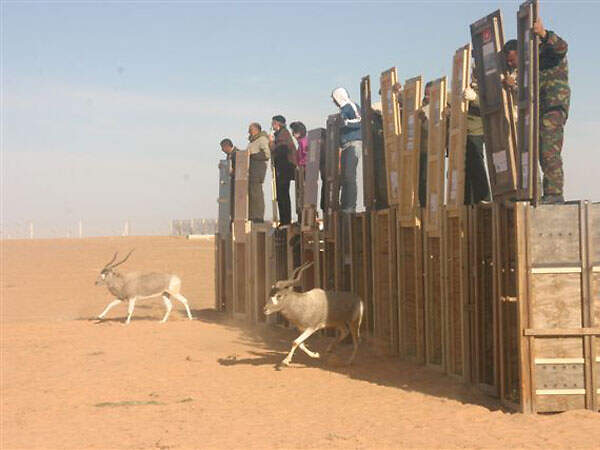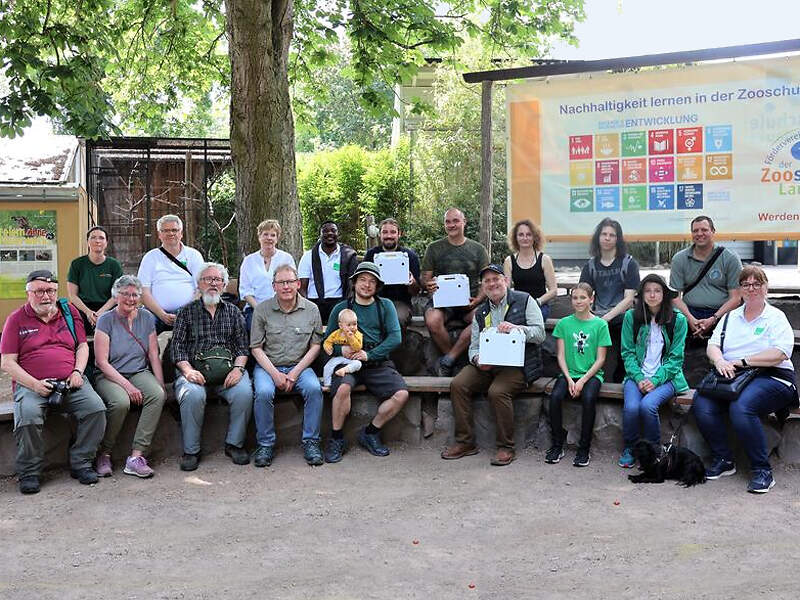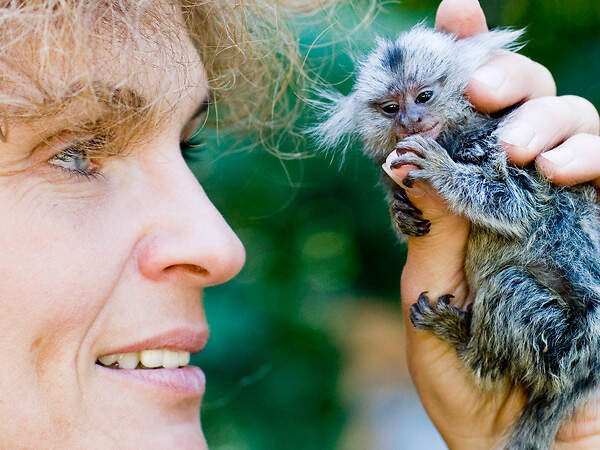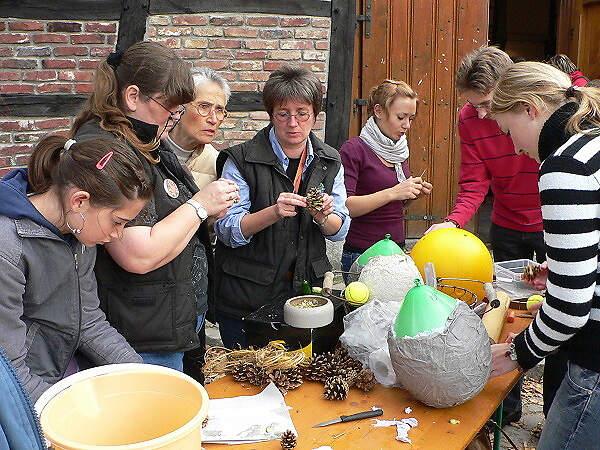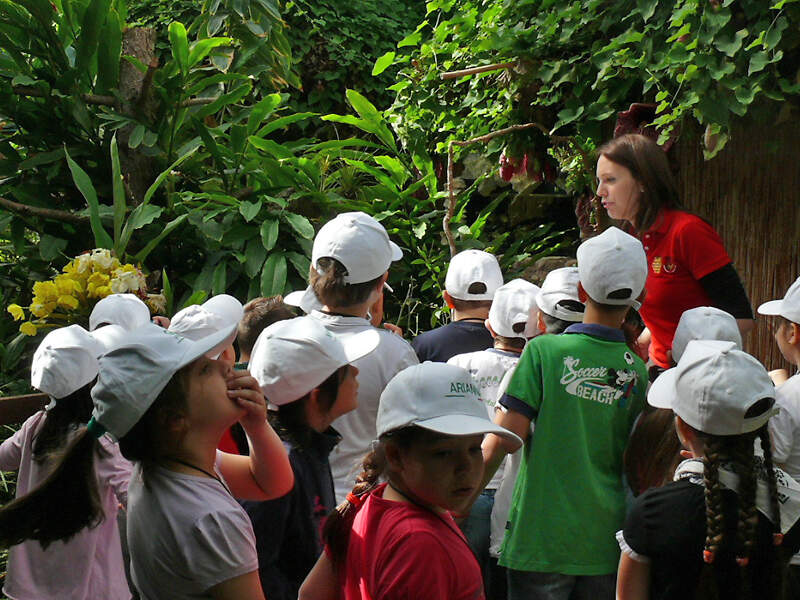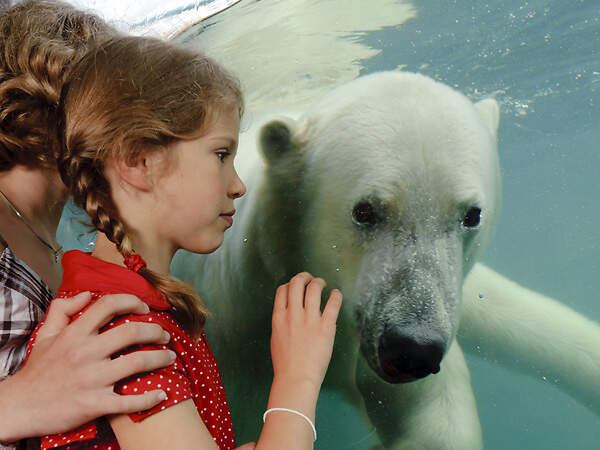HUSSAIN, S.A., GUPTA, S.K. & DE SILVA, P.K. (2011)
Biology and Ecology of Asian Small-Clawed Otter Aonyx cinereus (Illiger, 1815): A Review .
IUCN Otter Spec. Group Bull. 28 (2): 63 - 75
Abstract
The Asian small-clawed otter is the smallest among the 13 extant species of otters. It has a large distribution range extending from India in South Asia through Southeast Asia up to Taiwan and Philippines in the east and Southern China in the north. It is considered ‘Vulnerable’ due to habitat loss and degradation, depletion of prey species and exploitation. Being adapted to live in shallow streams and water bodies, they are more vulnerable to modification of these habitats by anthropogenic as well as climate change impacts. This paper summarizes the state of knowledge on the biology and ecology of this little known species. Over the years, the IUCN SSC Otter Specialist Group has developed a cadre of biologist across Asia to conduct field surveys and has popularized otter conservation by promoting otter as the ambassador of wetlands. However, concerted effort is needed for its long-term survival. Policy based action, research on factors affecting survival, habitat-based actions on creation and where required expansion of protected areas and communication and awareness building among local communities are suggested.
Volltext: http://iucnosg.org/Bulletin/Volume28/Hussain_et_al_2011.html
hussain-biblio
LUNA-PÉREZ, B., VALLE, C., VEGA FERNÁNDEZ, T., SÁNCHEZ-LIZASO, J. L. & RAMOS-ESPLÁ, A. A. (2010)
Halocynthia papillosa (Linnaeus, 1767) as an indicator of SCUBA diving impact.
Ecological Indicators 10 (5): 1017-1024. https://doi.org/10.1016/j.ecolind.2010.02.010
Abstract:
The solitary ascidian Halocynthia papillosa (Linnaeus, 1767) is proposed as a good indicator of the deleterious effect of SCUBA diving on the Mediterranean coralligenous communities. A comparative survey of H. papillosa populations at frequented and unfrequented localities was carried out over a two-year period (during 2006 and 2007), before and after a peak diving season in the Sierra Helada Marine Park (SW Western Mediterranean Sea). We observed bigger and more abundant individuals of H. papillosa at undived sites than at frequented dived sites during the period of study. Furthermore, individuals of H. papillosa in the most frequented localities occupied more cryptic positions than in the undived localities. H. papillosa was shown to be very sensitive to the adverse effects of SCUBA diving. This species could represent a reliable bioindicator of diving activity and as such constitute a useful tool for the quick and easy monitoring of impact on coralligenous communities before this damage becomes unmitigatable.
THOMAS, J. (2013)
The Role of the Sacred Ibis in Ancient Egypt.
Online auf WordPress.com; 6. März 2015. Zahlreiche Quellenangaben.
Einleitung:
The Sacred Ibis (Threskionis aethiopicus) once lived in Egypt and is depicted in many ancient Egyptian wall murals and sculptures. It is also found as mummified specimens at many burial sites and played a significant religious role, in particular during the Late and Ptolemaic periods. The ibis represented the god Thoth, god of wisdom, knowledge and writing, and was considered the herald of the flood. It was of practical use to villagers as it helped to rid fish ponds of water snails that contained dangerous liver parasites. However, it is now extinct throughout Egypt because of gradual aridification through swamp drainage and land reclamation.
21.01.2016
POLEY, D. (1994)
Vom Höhlenbär zum Batteriehuhn - zur Geschichte der Mensch-Tier-Beziehung.
Milu, Berlin 8: 171-173.
HEDIGER, H. (1965)
Mensch und Tier im Zoo: Tiergartenbiologie.
332 Seiten, 188 s/w.Photo auf Bildtafeln.
Albert Müller Verlag, Rüschlikon-Zürich, Stuttgart, Wien. Verlags-Nr. 1/4-811/65.
hediger-biblio
Was Menschen wollen
Zoos werden von Menschen für Menschen gemacht. Deshalb müssen sie nicht nur den Ansprüchen der gehaltenen Tiere genügen, sondern auch die Bedürfnisse und Vorgaben der menschlichen Gesellschaft berücksichtigen. Sie sind, im Sinne der Definition HEDIGERS (1973), gleichzeitig Freizeiteinrichtung, Lernort, Forschungsstätte und Naturschutzzentrum. Sie haben demzufolge verschiedene Anspruchsgruppen, die unterschiedlichste Anforderungen stellen.
Gesetzgeber, Politik
|
|
Die Gesetzgebung hat in den letzten Jahrzehnten inflationäre Züge angenommen. Alles wird geregelt, möglichst bis ins letzte Detail. Wenn ein internationales Übereinkommen abgeschlossen wird, kann man davon ausgehen, dass es bei der Umsetzung durch die Europäische Union zu Verschärfungen kommt, dass dann die Bundesrepublik noch eins draufsetzt und dass schließlich der Vollzug durch die Bundesländer uneinheitlich ist. Der Gesetzgeber macht den Zoos in Zusammenhang mit der Tierhaltung heute Vorgaben betreffend Tierschutz, Schutz vor Tierseuchen, Schutz der öffentlichen Gesundheit und Sicherheit, Artenschutz, Schutz der biologischen Vielfalt, Landschaftsschutz, Baumschutz, Arbeitnehmerschutz und so weiter. Dabei kann es durchaus vorkommen, dass sich die Vorgaben der verschiedenen Gesetzgebungen widersprechen. Einige Politiker wollen Zoos abschaffen und fördern daher schwer oder nicht erfüllbare gesetzliche Vorgaben. Mehrheitlich wird aber ein gutes Verhältnis gesucht, man zeigt sich bei Anlässen im Zoo oder übernimmt Tierpatenschaften. Leider geht aber trotzdem im Gesetzgebungsprozess oft vergessen, dass Vorgaben, die eigentlich auf die Landwirtschaft gemünzt sind, oft auch die Zoos betreffen, aber deren Situation nicht gerecht werden. |
Geldgeber
|
|
Im deutschsprachigen Raum sind die größeren Zoos überwiegend im Besitz der öffentlichen Hand oder sind gemeinnützige private Einrichtungen. Rendite ist deshalb in der Regel kein Thema. Vielmehr soll aus der Sicht der Kommunen oder gemeinnützigen Betreiber der Zoo eine preisgünstige, allen Bevölkerungsschichten zugängliche Möglichkeit sein, die Freizeit zu verbringen. Andererseits haben die Geldgeber, namentlich die Kommunen, alles Interesse, Defizite zu vermeiden. Nachdem neue Anlagen unterschiedlichen, aber stets hohen Ansprüchen genügen müssen, ist Bauen im Zoo teuer und kann nur selten aus Überschüssen der Betriebsrechnung finanziert werden. Die Geschwindigkeit und Frequenz, mit der neue Tiergehege realisiert werden können sind daher wesentlich von der Finanzkraft der Kommunen abhängig. Viele Bauvorhaben wären nicht möglich, wenn die Zoos nicht auf einen enormen Rückhalt in der Bevölkerung zählen könnten. Fast jeder Zoo hat einen Freunde- oder Förderverein, der ihm helfen will. 69 Vereine in Deutschland, der Schweiz, Österrreich, den Niederlanden und Spanien - mit etwa 80'000 Mitgliedern - haben sich in der Gemeinschaft der Zooförderer (GDZ) zusammengefunden. Aus dem GDZ-Budget werden gemeinsame Projekte gefördert, so etwa eine neuen Schneeleopardenanlage in Tallinn. Hauptsächlich unterstützen aber die einzelnen Vereine Projekte ihres jeweiligen Zoos. Einige Beispiele: 1999-2009 - Zoofreunde Leipzig insgesamt 3.6 Mio €, Zoofreunde Krefeld 110'000 € zum Bau des Forscherhauses, 2010 - Freunde des Duisburger Tierparks 320'000 € an die neue Bärenanlage, Heidelberger Tiergartenfreunde 100'000 € zum neuen Elefantenhaus; 2011 - Freunde Hauptstadtzoos 110'000 € zum Umbau des Vogelhauses im Berliner Zoo. Die Freundevereine von sieben Schweizer Zoos wiesen im Jahr 2015 zusammen 53'920 Mitglieder auf, welche die Zoos mit 1.675 Mio. CHF unterstützten. |
Tier- und Artenschützer
|
|
Die Zooleute verstehen sich selbst als Tier- und Artenschützer und sehen in der Regel keinen Konflikt zwischen den Anforderungen der beiden Schutzziele, wenn man davon absieht, dass die Zoos, ebenso wie die Natur- und Artenschutz-Organisationen, dem Erhalt und guten Funktionieren einer Population Vorrang vor dem Erhalt des Lebens eines Individuums geben, ein Standpunkt, der von "Tierschützern" nicht unbedingt geteilt wird. Naturschutzorganisationen haben mittlerweile begriffen, dass von den Zoos keine Gefährdung der freilebenden Tierwelt ausgeht, sondern dass sie vielmehr der wichtigste Multiplikator sind, um den Natur- und Artenschutzgedanken in die Bevölkerung hinauszutragen, und dass sie im Rahmen ihrer Möglichkeiten Schutzprojekte nicht nur ideell, sondern auch mit Fachwissen, Tieren, Material und Geld unterstützen. Währenddem das Verhältnis zwischen Zoos und Naturschützern in der Regel unproblematisch ist und oft eine enge Zusammenarbeit praktiziert wird, trifft das für Tierschutzorganisationen nicht im selben Maße zu. Zwar kann auf lokaler Ebene ebenfalls pragmatisch zusammengearbeitet werden, auf nationaler Ebene werden aber von den Organisationen, die ja selbst nicht in der Verantwortung stehen, vielfach überzogene Forderungen gestellt. Zoos sollen sich sachlich begründeter Kritik stellen, sie müssen sich aber auch gegen ungerechtfertigte Vorwürfe oder gut gemeinte, aber unzweckmäßige Vorschläge wehren. Dass mit Organisationen, die aus ideologischen Gründen ein Verbot der Haltung aller oder bestimmter Tierarten fordern, ein Dialog schwierig bis unmöglich ist, versteht sich von selbst. Zum Glück sind diese Organisationen, so lautstark sie sich gebärden, nicht repräsentativ für die große Mehrheit der Bevölkerung und ihre Argumentation ist wenig stichhaltig, was aber manche Politiker nicht daran hindert sie zu unterstützen. |
Tierpflege-Personal
|
|
Tierpfleger haben in der Regel ihren Beruf gewählt, weil sie sich zu Tieren hingezogen fühlen und sich mit ihnen beschäftigen wollen. Sie wünschen sich daher ausreichend Zeit, um sich mit den Tieren abzugeben und z.B. Programme zur Umwelt- und Verhaltensanreicherung oder für das sogenannte "Medical Training" zu erarbeiten und durchzuführen. Vom Arbeitgeber erwarten sie zudem, dass die betrieblichen Einrichtungen und Arbeitsabläufe so gestaltet sind, dass Gefährdungen der Gesundheit, Unfälle und Überbeanspruchungen nach Möglichkeit vermieden werden und dass nicht nur den Schaugehegen, sondern auch den Zugängen zu den Gehegen und den Einrichtungen hinter den Kulissen, wie Personalräume, Werkstätten, Zucht- und Abtrenngehege, Material- und Futterlager, Klimatisierung sowie Entsorgung, die nötige Aufmerksamkeit geschenkt wird. |
Zoopädagogen
|
|
Wissensvermittlung und Pädagogik sollen ein integraler Bestandteil der Gehegegestaltung und Bestandsplanung sein. Methoden, die Bildungsprogramme umzusetzen, können unter anderem umfassen: Schilder, Ausstellungen, permanente oder temporäre Ausstellungen, audio-/visuelle Darstellungen, interaktive Elemente, Computer-gestützte Informationen, Zooführer und Veröffentlichungen oder Veranstaltungen von Mitarbeitern. Wenn pädagogische Programme erfolgreich sein sollen, müssen die Zootiere optimal gehalten werden, in Anlagen, die es ihnen ermöglichen, so natürlich zu leben und sich zu verhalten, wie es eben möglich ist. Tiere, die an physischen und/oder psychischen Einschränkung zu leiden scheinen, sind kontraproduktiv für die Pädagogik und konterkarieren die Naturschutzbotschaft. Darbietungen mit Tieren können hilfreich sein, es soll aber ihre pädagogische Wirksamkeit belegt und der Tierschutz in jedem Fall gewährleistet sein. Unnatürliches Verhalten der Tiere oder ihre Vermenschlichung sind zu vermeiden. Um ihrer Tätigkeit nachzugehen wünschen sich die Zoopädagogen eine gute schulische Infrastruktur mit Klassenzimmern, Wetlabs, Sammlungsraum sowie Einrichtungen, um vor Tiergehegen ungestört vom übrigen Publikum zu unterrichten. |
Besucher
|
|
Hauptmotiv für einen Zoobesuch ist in der Regel, seine Freizeit in angenehmer Umgebung zu verbringen und dabei etwas zu erleben, allein, mit Partner, im Kreis der Familie oder mit Freunden. Die Besucher wollen Tiere sehen, möglichst ohne störende Gitter und in einer naturnahen Umgebung. Große, hauptsächlich exotische Säugetiere, wie Menschenaffen, Bären, Löwen, Tiger, Elefanten, Nashörner, Flusspferde und Giraffen, sowie Meeressäugetiere und Pinguine stehen in der Beliebtheitsskala ganz oben. Es soll etwas los sein - die "Fütterung der Raubtiere" ist zum stehenden Ausdruck geworden, schlafende Tiere werden kaum beachtet. Man will Tieren nahe kommen, Streichelgehege oder Möglichkeiten Tiere zu füttern sind äusserst populär. Ob eine Haltung als tiergerecht beurteilt wird, hängt wesentlich davon ab, ob sie besuchergerecht ist, denn die meisten Menschen wissen wenig über die Bedürfnisse der Tiere sondern schließen von sich selbst auf das Tier. Selbstverständlich wollen die Besucher nebst einem positiven Tiererlebnis auch eine ihren Bedürfnissen angepasste Infrastruktur, wie rollstuhl- und kinderwagengängige Wege, im Park verteilte Sitzbänke, eine gute Gastronomie, saubere Toiletten und attraktive Kinderspielplätze. |
Literatur:
- DOLLINGER, P. (Hrsg., 2008)
- DOLLINGER, P. (Hrsg., 2016)
- HEDIGER, H. (1965)
- HEDIGER, H. (1973)
- POLEY, D. (Hrsg., 1993)
- POLEY, D. (1994)
Zurück zu Tierhaltung
PD - 31.12.2010; 07.01.2011; reaktiviert 25.08.2023
2110
HEDIGER, H. (1951)
Jagdzoologie - auch für Nichtjäger.
212 Seiten, 37 Tafeln. mit 76 s/w-Fotos.
Verlag Friedrich Reinhardt AG, Basel. ISBN-13: 978-3724502968.
hediger-biblio
HEDIGER, H. (1942)
Wildtiere in Gefangenschaft. Ein Grundriss der Tiergartenbiologie.
250 Seiten. Mit einem Vorwort von Adolf Portmann.
Verlag Benno Schwabe, Basel.
Englische Ausgabe: (1950) Wild animals in captivity - an outline of the biology of zoological gardens. Butterworths Scientific Publications.
Englische Ausgabe, Paperback: (1964) Wild animals in captivity - an outline of the biology of zoological gardens. Dover Publications, New York.
hediger-biblio
HEDIGER, H. (1950)
Wild Animals in Captivity - An outline of the biology of zoological gardens.
Translated by G. Sircom. Foreword by Dr. Edward Hindle, F.R.S., Butterworths Scientific Publications Ltd. London.
auch als paperback: (1964). Dover Publications Inc., New York. Company Ltd., London
Wild Animals in Captivity covers some of the mistaken notions concerning the conditions of animals in captivity, most of which are the result of an anthropomorphic approach to the subject.
This book is composed of 12 chapters and starts with an overview of the historical development of zoological gardens. The succeeding chapters deal with the territorial requirements and sociological factors in the wild life. These topics are followed by discussions of the wild animal’s transition behavior from freedom to captivity; the physiological and psychological aspects of animal captivity; and the motive and situation of animal escapes. Other chapters emphasize the physical and biological environment of animals in captivity. The final chapters examine the problems related to feeding patterns, and nutrition of captive animals. These chapters also explore the relationship between human and animal, their capacity to be tamed and trained.
This book will prove useful to zoologists.
hediger-biblio
SALZERT, W. (2010)
Was macht Tiergärten attraktiv? Ein kleines Einmaleins der Zoogehegegestaltung.
Schüling Verlag, Münster. ISBN 978-3-86523-166-6.
Inhalt:
Zoologische Gärten zählen angesichts des weltweit zunehmenden Tempos der Naturvernichtung zu unseren wichtigsten kulturellen Einrichtungen. Sie haben zum einen die Funktion einer Bildungseinrichtung in Sachen Umwelt-, Natur- und Artenschutz. Zum anderen sind sie eine – hoffentlich nur temporäre – Überlebensinsel, eine Arche Noah für eine immer größer werdende Anzahl von bedrohten Tierarten.
Tiergärten müssen aber nicht nur gute, artgerechte Tierhaltungen bieten. Sie müssen auch für ihre Besucher attraktiv sein. Denn nur so können sie überzeugend Aufklärung betreiben und viele Menschen erreichen. Und nur als attraktive Einrichtung ziehen sie die notwendigen Besucherzahlen an, ohne deren Eintrittsgelder ein Zoo nicht existieren kann.
Vor dem Hintergrund jahrzehntelanger beruflicher Beschäftigung damit wird hier das Thema „Zoogestaltung“ erstmalig in Form eines kleinen Lehrbuches behandelt. In komprimierter, leicht nachvollziehbarer Weise werden Regeln definiert, die bei der Gestaltung attraktiver Zoos und Tiergehege beachtet werden sollten. Das reich bebilderte Buch sollte für in Zoos und Tiergärten Beschäftigte, aber auch für zoo-interessierte Laien eine nützliche und anregende Lektüre sein.
salzert-biblio




